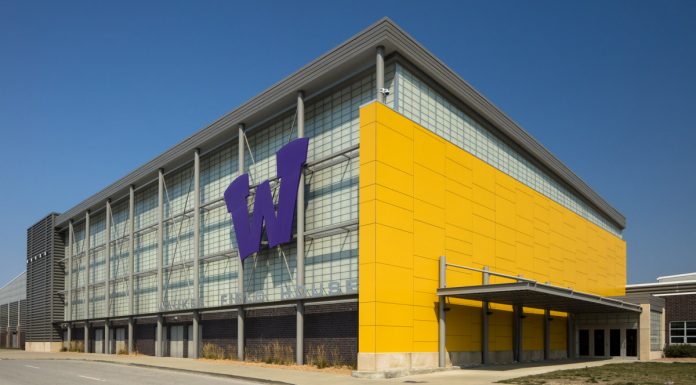Imagine this: You’re standing on a goldmine but keep digging in the same old spot because that’s where everyone says the treasure is—sound familiar? Iowa’s farmers are sitting on one of the most valuable resources in the world, yet many of us are still locked into a one-dimensional view of what our corn can do. It’s time to break free from the old narrative. We’re more than ethanol. We’re more than Sustainable Aviation Fuel (SAF). The future is ours for the taking, and it’s bigger, bolder, and more profitable than we’ve ever imagined.
Corn: The Lifeblood of Tomorrow’s Industries
Corn is so much more than fuel. It’s the backbone of what could be the next industrial revolution—one that doesn’t rely on tired old ideas but embraces the future. We’re not just growing crops anymore; we’re growing the raw material for bioplastics and bio-based chemicals—industries that are booming right under our noses, ready for us to jump in.
Think about it: corn can be transformed into polylactic acid (PLA), a bioplastic that’s used in everything from packaging to medical devices. In a world desperately searching for alternatives to petroleum-based plastics, PLA offers a real solution. And who’s in a better position to provide that than Iowa farmers? The global bioplastics market was worth $9.17 billion in 2020, and it’s set to explode by 16.1% annually until 2028. That’s not just a side business—it’s a movement.
We’ve been playing small ball when we could be running the game. Corn can also be used to create bio-based chemicals that power everything from cosmetics to industrial products. Ethanol, when processed into ethylene, becomes a building block for materials like plastics, adhesives, and synthetic rubber. If we want a future where Iowa corn is at the center of the global economy, this is where we start.
Bioplastics and Bio-based Chemicals: Iowa’s Gateway to a Thriving Future
We’ve been conditioned to believe that ethanol and Sustainable Aviation Fuel (SAF) are the endgame for corn, but in reality, these are just the beginning. The bioplastics and bio-based chemicals markets are growing at a pace that’s hard to keep up with, and the numbers don’t lie. In 2022, the bioplastics market was valued at $11.6 billion, and by 2031, it’s expected to skyrocket to $56.36 billion. That’s a compound annual growth rate of 19.2%!
Imagine what that means for us. Technologies like the conversion of corn sugar into monoethylene glycol (MEG)—used in everything from polyester to antifreeze—are opening up new avenues that could consume over 100 million bushels of corn annually. That’s not just a niche market; it’s a tidal wave of demand waiting to be harnessed.
And that’s not all. Lactic acid from corn, which can be turned into acrylic acid for use in adhesives and diapers, is yet another avenue for explosive growth. The world is turning toward sustainable alternatives, and Iowa’s corn can lead the charge. Instead of banking on the next ethanol mandate or SAF subsidy, we can position ourselves at the forefront of a rapidly expanding global market that’s begging for what we already have.
The Carbon Capture Boondoggle: A Wolf in Sheep’s Clothing
While farmers stand on the cusp of this incredible opportunity, there’s another battle raging—one we can’t afford to lose. Carbon capture is being marketed as the next big thing, a supposed fix-all for industrial CO2 emissions. But here’s the reality: it’s nothing but a shiny distraction, a wolf in sheep’s clothing, that threatens to take away the land we’ve worked so hard to protect.
Carbon capture is being pushed with promises of environmental responsibility, but the truth is far more sinister. These pipelines, designed to transport CO2 across our state, are being built across farmland that’s being seized through eminent domain. You read that right—companies are using legal loopholes to take away your land for private gain. This is not about improving the environment; it’s about lining the pockets of a few corporations at the expense of Iowa farmers.
And for what? These pipelines pose real dangers. CO2 is an asphyxiant. In the event of a leak, it can displace oxygen, creating life-threatening conditions for both humans and livestock. We’re being asked to risk our livelihoods for a technology that doesn’t remotely solve the core problem.
A Call to Action: Iowa’s Future Lies in Innovation, Not Band-Aids
We need to wake up and realize that the future of Iowa agriculture doesn’t depend on government subsidies for ethanol or SAF, nor does it rest on dangerous carbon capture pipelines. It lies in bioplastics, bio-based chemicals, and other emerging markets that are growing with or without government intervention.
If ethanol is the old road, bioplastics and bio-based chemicals are the highway to the future. It’s time we move forward, full throttle, and leave behind the ideas that keep us tied to short-term solutions. The demand for these sustainable materials is not a passing trend—it’s a shift in the global economy. And Iowa is positioned to be a key player if we’re willing to break free from the status quo.
Imagine this: instead of pipelines running through your fields, draining your land of its value, we could be producing the materials that drive the next generation of global manufacturing. Instead of being tied to mandates, we could be the ones setting the pace, shaping the future with the versatility of Iowa corn.
The Future is Bright—But We Must Seize It
This is a call to arms. Iowa farmers are not just growers—we are innovators. We’ve fed the world, and now we have the chance to fuel its next great transformation. The path we’ve been on with ethanol served its purpose, but it’s time for something bigger, something more resilient, and something that secures the future of our farms for generations to come.
Bioplastics and bio-based chemicals are not just opportunities—they are the future of agriculture, and they are within our grasp. So let’s rise up and seize this moment. Let’s reject the dangerous and short-sighted carbon capture projects that threaten our land, and instead, embrace the industries that will allow us to thrive.
The future isn’t written yet, but we’re the ones holding the pen. It’s time to rewrite the story.
- Brian Frye is a sixth-generation Iowa farmer and an energy expert with over 15 years of experience in the oil and gas industry. Brian is passionate about exploring new opportunities for agricultural growth, fighting for common-sense energy policies, and advocating for the rights of farmers and landowners.












